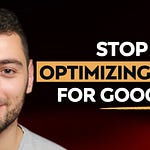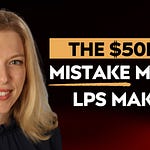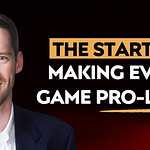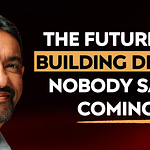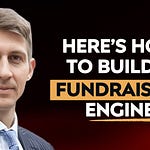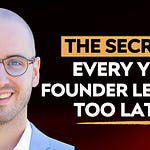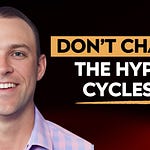What happens when a Rackspace veteran and OpenStack co-founder decides traditional venture capital just isn’t working—for founders or investors? You get Build Group, a $330M fund reimagining what it means to invest in sustainable, founder-led businesses for the long haul.
In this episode of the Ignite Podcast, Jim Curry pulls back the curtain on how he's rewriting the playbook for venture capital. From his early career in finance to co-founding one of the most important open-source infrastructure projects, Jim’s journey led him to a radical conclusion: great businesses aren’t bought—they’re built.
From Rackspace to Build Group: A Founder's Lens on Investing
Jim’s path started in finance, but it was his operational experience at Rackspace—and his role in co-founding OpenStack—that shaped his view of company building. During that time, he saw the pressure traditional VCs imposed to force exits based on fund timelines, not company readiness.
In his words, “We went public not because it was right for Rackspace, but because the fund needed liquidity.” That IPO happened in August 2008—days before the financial crash—and serves as a cautionary tale for time-boxed capital.
That experience birthed a question: What if investors could stay in longer, offer operational support, and grow with founders over decades—not just funding cycles?
The Build Group Model: Long-Term Capital, Concentrated Ownership
Build Group was Jim’s answer. Structured like a hybrid between a fund and a holding company, it offers what he calls “permanent capital.” That means founders aren’t pressured to exit on a fixed timeline—and investors don’t suffer when markets turn against them.
Key pillars of the model:
Initial fund of $330M, called over 5 years
Built-in recycling provisions to reinvest realized gains
Redemption optionality for investors—without forced exits
A concentrated portfolio (10–15 core companies)
Deep operational engagement from the Build Group team
The result? More alignment with founders, more patience from LPs, and better outcomes from companies that compound value over time.
Founder Fit: What Jim Looks for Before Writing a Check
Jim isn’t a spray-and-pray investor. He prefers high-conviction bets into post-product-market-fit companies, typically in the $5–10M ARR range with healthy (40–80%) growth and a clear path to profitability.
Here’s what he prioritizes:
Execution-focused teams: “I care less about pitch decks and more about how well they understand their org and their product.”
Collaborative founders: Not “coachable” in the condescending VC sense, but truly team-oriented leaders.
Product obsession over metrics theater: He’s skeptical of LTV/CAC gymnastics and favors gross margin payback and product depth.
Capital efficiency and resilience: Every portfolio company must have a “get-to-breakeven-in-6-months” plan.
Lessons from OpenStack—and Missing the AWS Moment
Jim doesn’t shy away from reflecting on what Rackspace got wrong. One of his biggest takeaways? The company misread Amazon’s rise as a competitor instead of a platform to build on. Instead of leaning into their strength—support and service—they tried to go head-to-head.
“We should’ve built a business on top of AWS, not against it,” Jim admits. It’s a rare moment of humility that underscores his core belief: real insight comes from being in the trenches—and staying humble about what you don’t know.
The AI Frontier: Skeptical of the Hype, Bullish on SaaS
Jim sees AI not as a standalone category but as a natural extension of the “data-enabled workflow SaaS” thesis Build Group started with in 2015. His take:
“Everyone’s funding agentic AI, but most don’t have access to proprietary data. That’s a recipe for noise, not outcomes.”
He’s far more excited about AI-powered SaaS products—especially those that reduce GTM headcount, scale revenue efficiently, or drive true user automation. In fact, several Build Group companies have already executed strategic exits under this model, including CaseText, which sold to Thomson Reuters.
The Future: A Second Fund, More AI, and a Side Hustle in Bass Fishing?
Looking ahead, Jim is already exploring Fund Two—this time with even sharper legal structuring for tax efficiency and more flexible capital deployment. He’s also deeply curious about the next evolution of SaaS and AI tooling, not just as an investor but as a tinkerer.
Whether it’s building GPT-powered investment committee agents or helping his 16-year-old son launch an AI-driven bass fishing lure business, Jim is all in on experimentation.
“You can’t just tell others how to play football—you’ve got to get back in the game.”
Why This Episode Matters
For anyone building, investing in, or advising startups, Jim Curry offers a refreshing—and deeply experienced—counterpoint to the typical VC narrative. He’s not chasing hype. He’s building for the decades.
Key themes:
Operational investing over financial engineering
Long-term alignment over DPI pressure
Real products > funnel metrics
Capital-efficient SaaS as AI-native infrastructure
Why concentrated, patient investing might outperform fast money
Chapters:
00:01 Jim Curry’s path from finance to co-founding Build Group
01:00 Lessons from Rackspace and the founding of OpenStack
04:00 Why traditional VCs fail founders in the “middle” of company building
06:45 The problem with forced exits and timing IPOs
08:56 How Build Group’s permanent capital model works
12:02 Why institutional LPs struggle with long-term investing
14:12 Evergreen vs. closed-end fund structures
17:14 Fund mechanics, recycling capital, and tax efficiency
21:00 Ownership strategy, board roles, and check size philosophy
24:36 Avoiding overhyped valuations and focusing on product strength
26:57 Building OpenStack and Rackspace’s cloud missteps
30:53 What Rackspace got wrong—and why they didn’t become AWS
34:03 The value of support over software in cloud hosting
36:41 Traits Jim looks for in long-term, founder-led companies
39:07 Why team-building and product vision matter most
41:03 Operator vs. investor mindset—and the danger of “fixer” thinking
46:18 Go-to-market missteps and sales team scaling advice
49:43 Why LTV:CAC is broken—and better SaaS metrics to use
51:20 How AI is reshaping SaaS—and what Jim’s betting on
53:55 The trouble with agentic AI startups and the value of proprietary data
56:18 Scaling to $10M+ with minimal headcount
57:26 Using AI to transform investment workflows and ICs
01:01:16 Personal AI use cases and GPTs in everyday investing
01:04:03 Closing reflections on staying curious, tinkering, and future fund models



